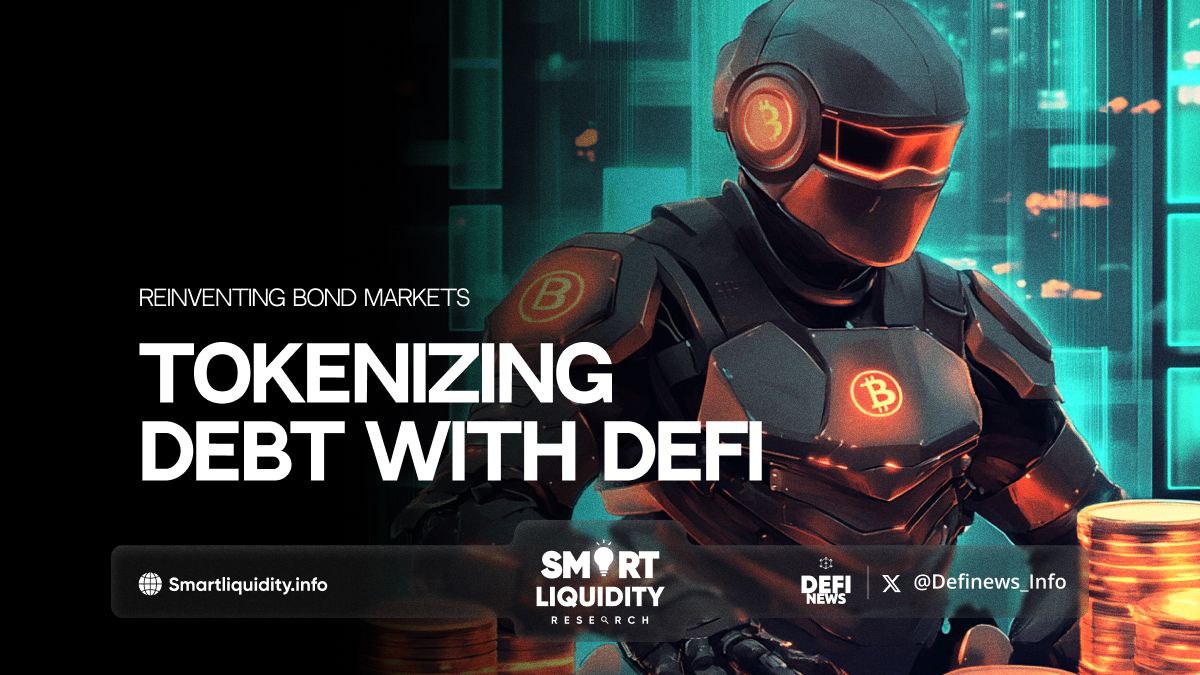Tokenizing Debt with DeFi: Reinventing Bond Markets


Tokenizing Debt with DeFi: Reinventing Bond Markets! The decentralized finance (DeFi) space has been at the forefront of innovation in the financial sector, offering new ways to access and manage assets. One of the most exciting developments in this area is the tokenization of debt, which has the potential to disrupt traditional bond markets by leveraging blockchain technology.
Understanding Tokenized Debt
Tokenized debt refers to the process of issuing debt instruments, such as bonds or loans, on a blockchain network. In this scenario, the debt is represented as digital tokens, which are issued, traded, and settled on decentralized platforms. This approach provides greater transparency, efficiency, and accessibility compared to traditional debt markets.
Key Benefits of Tokenized Debt:
- Increased Liquidity
Traditional bonds can be illiquid, often requiring a long time to find buyers and sellers. Tokenization enables fractional ownership, allowing debt instruments to be easily traded in smaller units, and making them more accessible to a broader range of investors. - Transparency
Blockchain technology offers a transparent ledger where all transactions are recorded. This eliminates the need for intermediaries like banks or brokers, reducing costs and increasing trust in the system. - Efficiency
Settling debt instruments through decentralized platforms can reduce transaction times and administrative overhead, cutting down on costs and the risk of human error. - Accessibility
DeFi platforms are open to anyone with an internet connection, making debt markets more inclusive. Tokenized debt can be issued in smaller amounts, allowing retail investors to participate in opportunities that were traditionally reserved for institutions.
DeFi’s Role in Revolutionizing Bond Markets
DeFi platforms have already made waves by creating new forms of financial instruments such as yield farming, staking, and decentralized lending. The introduction of tokenized debt into these ecosystems marks the next step in the evolution of decentralized finance. Through smart contracts, DeFi platforms can automate interest payments, principal repayments, and even enforcement of debt covenants, making the process more secure and transparent.
In traditional finance, bond issuance is often costly and complex, with fees for underwriters, legal counsel, and regulatory compliance. DeFi platforms, by contrast, offer a streamlined alternative where debt can be issued directly to investors without intermediaries. This is particularly appealing for smaller companies and emerging markets, where access to capital can be more challenging.
Challenges and Risks
Despite its potential, the tokenization of debt comes with its own set of challenges. Regulatory uncertainty is one of the biggest hurdles. Many jurisdictions are still grappling with how to classify and regulate tokenized financial instruments, which could impact the adoption of this technology.
Moreover, the volatility of the crypto market poses risks to debt issuers and investors alike. While stablecoins can mitigate some of this risk, the lack of regulatory frameworks may leave investors exposed in the case of default or fraud.
Additionally, the integration of tokenized debt with traditional markets is still in its early stages. Bridging the gap between on-chain and off-chain assets will be crucial for widespread adoption.
The Future of Tokenized Debt
As DeFi continues to mature, tokenized debt has the potential to become a cornerstone of the decentralized financial system. By providing more efficient, transparent, and accessible debt markets, DeFi platforms could challenge traditional financial institutions and open new avenues for capital raising and investment.
However, the success of tokenized debt will depend on several factors, including regulatory clarity, technological advancements, and market acceptance. If these challenges are addressed, future bond markets may be transformed with blockchain technology central to global debt issuance.
In Summary
The tokenization of debt is a promising development that could redefine bond markets as we know them. By leveraging the power of DeFi, investors and issuers alike stand to benefit from increased liquidity, transparency, and efficiency. As the trend grows, traditional and decentralized finance may merge, leading to a more inclusive and dynamic debt market.




